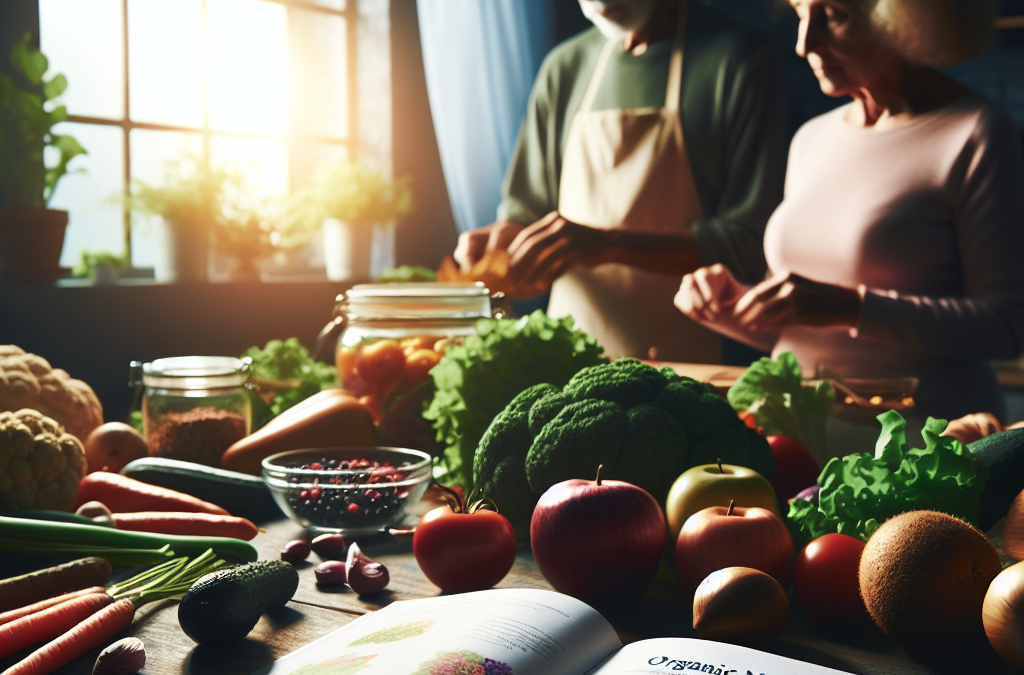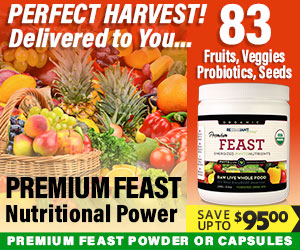1. Understanding the Importance of Organic Foods
Why Choose Organic?
In my journey through the senior years, I’ve quickly learned that what we put into our bodies really does matter. Organic foods aren’t just for the trendy folks in the aisles! They often have higher nutrient levels and, let’s be real, eating organic means fewer pesticides and chemicals which is perfect for our aging bodies. Trust me, it’s all about quality over quantity.
One fascinating point I’ve encountered is how organic fruits and veggies typically taste better. A ripe organic tomato or a crunchy apple has a natural sweetness that even my grandkids can’t resist. This flavor can encourage better eating habits, especially if you’re trying to incorporate more fresh produce into your diet.
Plus, if you’re someone who worries about food sourcing – and I know I do – organic labels typically mean more transparency. This kind of awareness helps me feel in control of my nutrition, leading to an overall sense of well-being.
Key Nutrients in Organic Foods
Now, it’s not just about going organic; it’s about what nutrients we need as we grow older. The big players include vitamins A, C, D, and E. Organic foods, especially leafy greens and brightly colored fruits, are packed with these essential vitamins which help boost our immune systems and combat inflammation.
That’s right! Including a variety of organic produce ensures you get a good mix of these vitamins. This is especially helpful because, as we age, our bodies can get a bit sluggish in absorbing nutrients. Therefore, starting with high-quality food makes a big difference in our health outcomes.
Don’t forget minerals like calcium and magnesium too! These help with bone density and muscle function, which is key for us seniors who want to stay active and independent.
Finding Quality Organic Options
One thing I’ve learned is where to shop for these organic gems makes a big difference. Farmers’ markets are fantastic! I love getting to know the local farmers and some even offer subscription boxes. This not only supports the community but also guarantees fresh produce that’s been grown with love and care. It’s like going on a mini adventure every week!
Also, don’t overlook grocery stores with dedicated organic sections. Just be sure to check product labels; some items might be labeled ‘natural’ but aren’t truly organic. You gotta keep your eye out!
And of course, there are online options these days. Many stores will deliver fresh organic produce directly to your door. This can be especially handy for those days I don’t feel like dragging myself out. Just be sure to choose reputable retailers.
2. Hydration and Its Role in Aging
The Importance of Staying Hydrated
Let’s chat about hydration. It’s something that often slips our minds as the years pile on, but trust me, it’s crucial! As we age, our bodies tend to feel less thirsty even when we need water. This is something I struggled with, often reaching for just a snack instead of a glass of water.
Dehydration can lead to all kinds of issues, from fatigue to confusion, and that’s the last thing we want! So, keeping a water bottle close by always does wonders for my reminder game. I always set regular times to sip and keep track of my intake.
Adding juicy fruits and veggies to your meals is a sneaky way to up your hydration too – think oranges, cucumbers, and tomatoes. They’ll not only help you meet your fluid goals, but they add flavor and color to your plate!
How to Effectively Hydrate
When it comes to hydrating, I’ve turned it into a game. I aim for at least 8-10 cups of water a day, and sometimes I mix it up with herbal teas or infused water for some flair. Seriously, have you ever tossed in some mint and lime? It’s refreshing!
I also make sure to incorporate more broth-based soups into my meals, especially if I know I might forget to drink water that day. It’s cozy, nourishing, and reassuring knowing it’s boosting both my hydration and nutrition at the same time.
Finally, during meals, I make it a habit to have a glass of water. Not only does it remind me to drink, but it can also help with digestion. So, it’s a win-win – hydrate and help my tummy out all in one go!
Spotting Dehydration Signs
Now, knowing the signs of dehydration is super important too. If you’re feeling super tired, dizzy, or find yourself with dry skin and a dry mouth – those are red flags! I can easily overlook them since they might seem trivial, but recognizing these signs early has helped me stay ahead on hydration.
Another tip? Keep an eye on your urine! I know it sounds a bit silly, but checking for a light yellow color is a good indicator of hydration. Dark yellow? Time to drink up! It’s become one of my health hacks.
Lastly, if you’re feeling particularly sluggish, giving water a priority boost could be just the fix you need—a little hydration can go a long way in brightening up my day.
3. The Right Balance of Macronutrients
Understanding Macronutrients
Let’s dive into macronutrients, shall we? In simple terms, these are proteins, fats, and carbohydrates. Balancing these is key to maintaining energy levels and keeping our bodies functioning well. Having a good grasp of what each one does makes meal prep a whole lot easier.
First up, protein is essential for maintaining muscle mass, which, as we all know, tends to decline as we age. Choosing lean protein sources, such as chicken, fish, beans, or tofu has been a game-changer for me. My favorite? A grilled chicken salad loaded with greens and avocado. Yum!
Next, fats. Good fats, like those found in avocados and nuts, keep my heart healthy and my joints lubed up. It wasn’t until I understood this that I stopped fearing fats. A little drizzle of olive oil can make a world of difference in your meals!
Finding the Right Macros for You
Just like every individual is different, our macro needs can vary too. Listening to your body and figuring out what makes you feel best is the key. I played around with ratios at first but found that a balanced plate helps keep me energized without feeling sluggish. About 40% carbohydrates, 30% protein, and 30% fats work well for me.
Keeping a food journal might sound daunting, but it’s super helpful. Jotting down what I eat for a week gave me a clearer picture of what I was missing and what I was overdoing. It’s like putting a puzzle together; once you see it, everything makes sense.
And don’t forget, staying flexible is important! Some days my cravings pull me towards more carbs (thank you, pasta!) and that’s okay – it’s all about balance over time, not perfection in a day.
Meal Planning for Success
Meal prepping has been a game changer for managing my macronutrient intake. I usually set aside some time each week to plan my meals, which helps me focus on getting that balanced plate. It also saves me from those last-minute decisions that often cause serious dietary faux pas!
Get Certified Organic Whole Food Nutrition – Nutrient Dense Supplement
Pairing different food groups together is a nifty trick I’ve learned. Mixing proteins with vegetables and whole grains not only keeps things interesting but also fills me up without feeling heavy afterward.
Looping in variety is super important, too. I swap out ingredients regularly which keeps my meals fun and new. Plus, it ensures I’m getting a wide range of nutrients. Nobody wants to eat the same old thing every day!
4. Incorporating Whole Foods into Your Diet
What Are Whole Foods?
Whole foods are the kind of ingredients that come straight from the earth and haven’t been overly processed. These can include fruits, vegetables, nuts, seeds, whole grains, and lean meats. They are like nature’s version of multivitamins, providing a buffet of nutrients that our bodies crave.
If you haven’t tried making your meals from whole foods, I highly recommend it. It’s allowed me to feel more connected to what I eat, and my body really seems to appreciate it. Plus, you can bet that those colorful, nutrient-rich foods make for a beautiful plate!
Eating whole foods has significantly improved my digestion and energy levels. I’ve noticed that the bad moods I sometimes faced were often due to the heavy meals packed with processed ingredients. These days, I focus on keeping my meals full of life!
Strategies to Add Whole Foods
One little trick I’ve adopted is to make at least half my plate fruits and veggies. I’ll sauté some greens or toss in a colorful salad with each meal. This not only amps up the nutrients but also makes me feel happier while eating!
Another fun way to sneak in whole foods is by experimenting with smoothies! I throw in leafy greens, berries, and some nut butter. It’s a quick breakfast or snack that keeps me full and energized.
And let’s not forget the magic of grains – brown rice, quinoa, and whole grain bread are staples in my pantry now. Swapping out white rice for a heartier whole grain made a world of difference in how my meals feel and look.
Cooking with Whole Foods
Cooking from scratch might sound scary for those of us who aren’t chefs, but trust me, it can be simple and fun. I typically stick to easy recipes that allow me to make use of whole food ingredients. Think stir-fries and sheet pan dinners; they’re quick and gratifying!
Trying new recipes also keeps things from getting stale. Whether it’s a new take on a favorite dish or a completely different cuisine, it’s always an adventure in my kitchen. Who knew cooking could be such fun?
Joining cooking classes aimed at whole food preparation can be an exciting way to enhance your skills too! I’ve learned so much from my local community classes, plus I’ve made some great friends along the way.
5. Regular Health Check-ups and Monitoring Nutrition
Why Check-ups Matter
Getting regular health check-ups is something I can’t stress enough. It’s great to eat healthy and for the most part, feel good, but having those check-ups ensures everything stays in working order. Knowledge is power, and this applies to our health just the same!
My doctor often takes the time to talk to me about my nutrition based on the results we see from my tests. This has helped me stay accountable and make adjustments when necessary. Spreading the word about my health practices has inspired my friends to do the same, which is super cool!
Plus, keeping an eye on vitals like blood sugar and cholesterol can help catch any issues before they become major concerns. It’s like having a safety net; it puts my mind at ease knowing I’m on top of it.
Monitoring Progress
Tracking my health journey has been another cheerleader to my nutrition. Regularly reflecting on how I feel after eating certain foods or meals allows me to see what suits my body best. Journaling about my meals and how they affect my mood is a simple yet effective way to stay in tune.
Technology plays a role here too! There are plenty of apps that help in food tracking and even monitoring daily water intake. I enjoy checking off my accomplishments; it’s a little boost of motivation.
Sometimes, I take it a step further and check in with a nutritionist every few months. Having a professional’s perspective is great—it brings fresh ideas and can highlight blind spots in my diet that I might not have noticed.
Building a Support Network
Having a support system can make all the difference. Whether it’s family, friends, or online groups, I love sharing my successes and challenges with others who are on a similar journey. It creates such a sense of community and accountability!
These connections often lead to swapping recipes, sharing tips, and even exercising together – it’s a win all around! A friendly chat about nutrition can lighten the weight of healthy eating.
A motivating group can turn meal prep Sundays into a fun get-together instead of a chore! Making healthy changes becomes much more fun when you’ve got a crew doing it with you!
FAQ
1. What are the main benefits of eating organic foods as a senior?
Eating organic foods can lead to higher nutrient intake, lower exposure to pesticides and chemicals, better taste, and improved overall health, which is particularly important as we age.
2. How much water should seniors drink each day?
Seniors should aim for 8-10 cups of water a day, but it can vary based on individual health, activity levels, and climate. It’s important to listen to your body!
3. What are some good sources of protein for seniors?
Great sources of protein for seniors include lean meats like chicken and fish, legumes like beans and lentils, dairy products, and plant-based options like tofu and quinoa.
4. How can I include more whole foods in my diet?
You can include more whole foods by incorporating more fruits, vegetables, nuts, seeds, and whole grains into your meals. Meal prepping and experimenting with new recipes is a great way to start.
5. Why are regular health check-ups important for seniors?
Regular health check-ups help catch potential health issues early, monitor vital health metrics, and provide an opportunity to receive professional guidance on nutrition and lifestyle adjustments.




